E-Archive
Articles
in Vol. 21 - March Issue - Year 2020
Dry Vibratory Finishing Processes, VIBRODRY
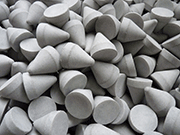
Vibro dry
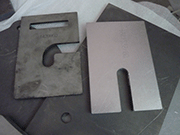
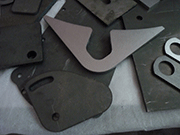
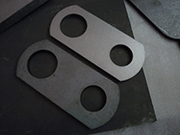
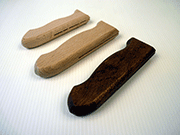
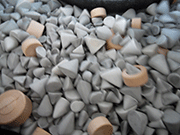

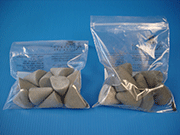
Comparison With Other Known Dry Processes
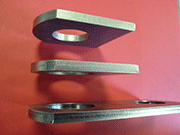
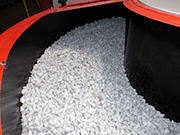
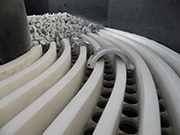
Metal surfaces mass finishing, also known as tumble finishing and vibro-finishing, is going through a very interesting evolutionary phase.
There are at least two keys to understanding this phase: strongly reduced environmental impact and decisive process costs reduction.
This phase has at least two main characteristics: an innovative finishing media (i.e.: abrasive chip) called QF and a series of processes called VIBRODRY, both patented (patent pending – I).
In order to see how we can get there, let’s start with the results: the strongly reduced environmental impact and the decisive process costs reduction mentioned above.
The first step was made thanks to the new technology offered by abrasive chips or even the finishing media called QF.
This kind of media, whose complete name is "Quattrofinish" (see the logo of the series in the present article), counts with a heterogeneous series of media, including some dry-finishing versions.
Furthermore, it is also important to point out that, among the products designed for dry applications, some media are especially suitable for metal surface finishing whereas others are especially suitable for wood, polymers and composites including those polymers used for the additive manufacturing.
Based on the type of application required, the new abrasive media of the QF series for metal, wood or polymer/composites can perform finishing processes by themselves, thanks to the balance between density, elasticity and abrasiveness, or, especially as far as metal surfaces are concerned, combined with additive powder compounds.
Dry processes with QF media have more advantages than limits. Let’s consider:
SAFETY – ATEX Norms Verification
Dry-finishing processes with specific metal alloys (Aluminum, Magnesium, Titanium) can be considered part of ATEX policies, which regulate environments at risk of explosion.
As much as we felt deep excitement in finding "positive" finishing results, we also feel deep respect and attention for the SAFETY issue, to determine the study of both hardware solutions (machine construction) and new formulations of consumer products.
The solutions implemented by Rollwasch have led to a high level of machine safety and, on the other hand, to a philosophy of "inerting" the risks derived from explosive powders, thanks to inerting powders contained in the abrasive finishing compounds that contain its negative effects.
There are always three main causes linked to each other that can determine an explosion; the so called fire triangle:
Combustible (in this case, metal or polymer powder at certain concentrations);
Combustive agent (e.g. air and oxygen, during the suction phase of the process);
Sparkle (it could be, e.g., electrostatic power or a small sparkle caused by the metal friction, which only lasts a few milliseconds but is enough to trigger an explosion);
Very accurate tests carried out in our workshops on very common applications transformed from classic processes (wet) into experimental processes (dry) have produced variable powder concentrations.
They were thoroughly compared to the ATEX policy information where the following levels are highlighted – for the sake of example:
Lower Explosive Limit (LEL)
Aluminum (LEL medium): 45mg/l = 0,045gr/l = 0,045gr/dm3
The study carried out in this regard was oriented towards the inertness of the fraction of potentially explosive powders generated by each individual finishing process, with a quantity of specially formulated powder of abrasive compound and of inertness at the same time. The first formulated compound, called Rollkemik ALUTEK-A4, also made it possible to achieve excellent levels of finish, with light colors and reduced roughness.
Applications On Zamac And Brass
Brass, but especially zamac, can undergo dry vibro-finishing processes VIBRODRY – just like martensitic and austenitic steel, bronze and other similar alloys.
Application On Wood And Polymers
With a particular variation especially studied for material that is softer than metals such as wood or plastic, VIBRODRY processes can make soft and smooth surfaces that will be impregnated and/or varnished at a later point.
As far as wood articles are concerned, interesting results have been achieved with hilts of cutlery, furniture knobs, eye glass frames, holding rings for curtains and the like, whereas as far as the polymers are concerned, there are even more application possibilities, varying from decorations to technical articles.
Application On Additive Manufacturing Polymers And Composites
Many finishing applications after additive manufacturing can be carried out dry, especially on polymers and composites. In this case, the VIBRODRY process offers extreme simplicity and reliability, in small spaces and at low costs. These processes can act together with the QF media producing the desired result as well as the wished-for finishing level. VIBRODRY processes are in fact based on the use of abrasive compounds into the working vibrating bowl as the parts are being loaded into the bowl. Because of their dosage, these compounds can keep working for a set amount of time, then they are suctioned for the final phase, just before the end of the cycle and the machine turning off (or before the automatic offload of the parts). This technique reduces the suction phase to a minimum and therefore limits the power consumption considerably.
Electrostatic Charges
Electrostatic charges tend to decrease over a certain period of time, the duration of which depends on the resistivity of the material. The voltage present on a material depends on two factors:
the amount of charge on the material, and the insulating capacity of the material.
For practical and exemplary purposes, two extremes such as plastic and metal can be taken:
Metals generally have very low resistivities, and tend to be good conductors: they will therefore accumulate very low voltages.
Plastics generally have very high resistivity and insulating capacity, so a small charge can produce significant voltages.
The VIBRODRY processes can generate, during their operation, electrostatic charges that are added to other charges already present.
The presence of the latter can be determined by various factors such as humidity, type of material, friction, change in temperature, etc., and can cause some problems such as:
Sucking effect
The product remains "glued" to the working bowl surface in some free areas until the charges run out, after which the product is released, often beyond the storage container.
Attraction Effect
Intended as an attraction for dust and dirt: the dust is attracted by the charges and normally settles in the interstices and nested parts of the product, creating accumulations of dirt which, repeatedly pressed, generate variable phenomena depending on the geometry of the various components.
Bridge Effect
A phenomenon that appears when the product is stored in large capacity containers and the modest surface charges of each individual product add up to each other, reaching levels that creates a discharge channel to the ground, and if the operator gets too close, he might receive the so-called "shock".
Possible Solutions Thanks To De-ionization
The third generation machines of the VIBRODRY series can be equipped, on request, with optional ionizers, thanks to which it is possible to reduce the electrostatic charge to overcome the problems listed above or, at least, to drastically reduce them.
Rollwasch, which has always been actively involved in R&D, has safety as its main objective of its experiments in the foreground, therefore the improvement of the products and the results achievable with them are paramount.
This updated VIBRODRY process generates interesting applications for the final user, that we can summarize as follows:
Efficiency Of The Process
Comparing a classic process to a VIBRODRY process, the same results can be reached in half the time. In most cases, with similar times, although in some cases, the differences have slight advantage over wet processes. Surfaces polished through VIBRODRY processes can result in being slightly better, that is to say, they are smoother and thinner (e.g. a zamac buckle, using the same time a wet process would take, or with little difference, can be lighter and of course free from micro-signs and oxidation, as they never touch any water).
Basically, the difference between the use of these processes and the traditional ones is not the time, which is about the same, but the fact that these new techniques do not need the use of water.
Dust Reduction
The powders generated by the abrasion of the metals and treated materials, as well as the material that makes up the media and the additive abrasive compounds introduced into the finishing process, are extracted by a suitably sized dust aspirator and combined with a cyclone - buffer tank.
An interesting and innovative feature of this process is that it is studied to make progress over time and to engage the suction phase just for a small fraction of the total process time, achieving interesting reductions of power expenses. On the other hand, other kinds of processes (such as the wood polishing process) maintain the suction as constantly active and consume a great deal of power.
Residual Waste Reduction
Residual waste (dust) coming from media consumption is very low, which ultimately determines lower disposal costs.
Residual Dust Reduction
In most cases, residual dust on the parts is really irrelevant and therefore the parts can go directly, for instance, to the plating lines – some operational limits can be found in case of peculiar shapes, with micro-holes, very long and small blind holes, arabesque-decorated motifs and the like.
Reduction Of The "Below Measure"
The frequencies on which traditional media wear off normally cause relevant selection problems, which can be remarkably decreased with the use of the new long lasting QF media.
Transportation And Stocking Costs Reduction
Being a consumption rate 10-fold lower than usual, we can certainly foresee pollution reduction due to the lower number of transportation trips, and of course, a reduction of the costs. As a consequence, stocking costs will also decrease.
Summary
To summarize: no more wastewater treatment-related problems; limited polluting residual emission; bright and oxidation-free results; and possibility to reduce electrostatic charges with polymers and composites.
Evaluation of the feasibility to adapt existing plants with maximum ratio costs/benefits is also possible.
How To Evaluate The Feasibility Of A Process
Rollwasch® Italiana S.p.a. test room and its workshops are the fastest way to make a preliminary evaluation, without costs or engagement.
For Information:
Rollwasch® Italiana S.p.a.
Via San Carlo, 21
20847 Albiate (MB), Italia
Tel. +39.0362.930334
Fax +39.0362.931440
E-mail: info@rollwasch.it
www.rollwasch.it



























